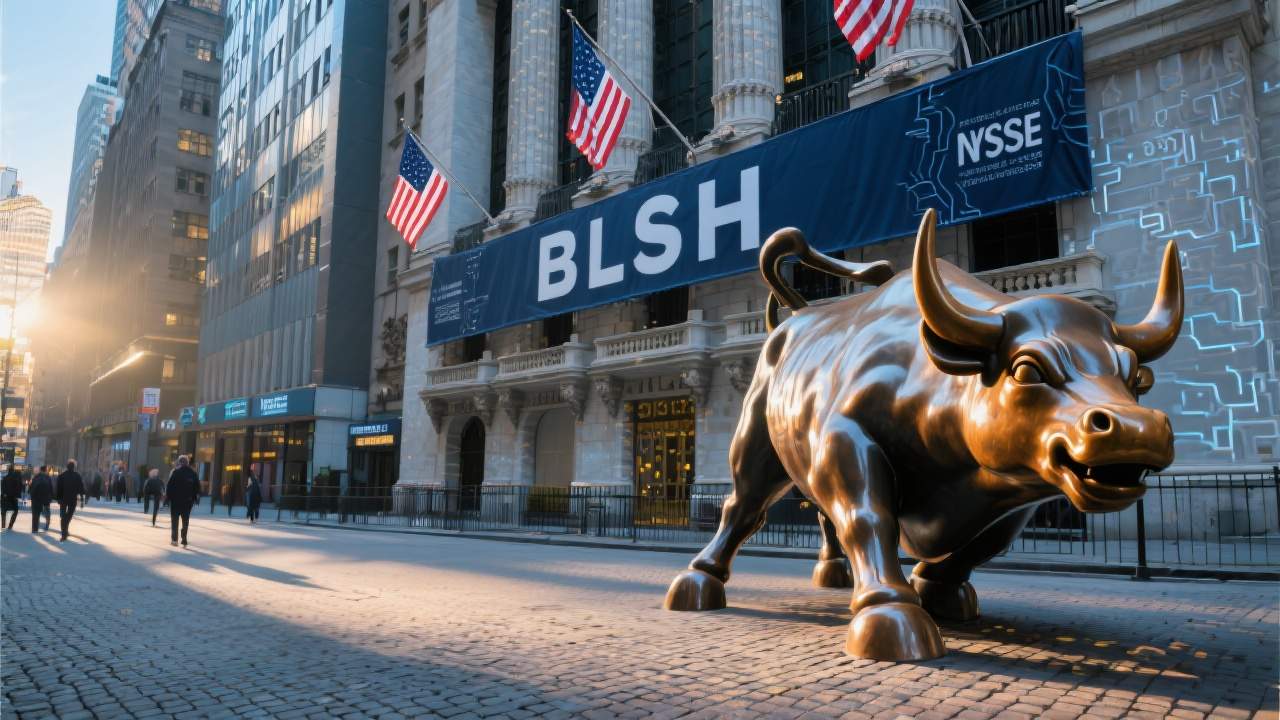
Bullish IPO day arrived with a thrum you could feel on the pavement. The cryptocurrency exchange’s NYSE IPO 2025 priced at 37 dollars, above range, and the BLSH stock opened near 90 before sprinting into triple digits.
By midday the Bullish stock price had triggered volatility halts, the kind of frenzy that turns a cryptocurrency exchange listing into a market-wide Rorschach test. The move shoved Bullish market cap from about 5.4 billion dollars at pricing to well north of 16 billion at the highs, compressing a year’s worth of rerating into an hour.
Why this listing hit a nerve
This was not a meme splash. The Bullish NYSE debut came packaged as a compliance-forward crypto exchange IPO built for institutions. Tom Farley Bullish leadership matters here. The former NYSE president is selling a model that looks familiar to big accounts and deeply different from the offshore chaos of the last cycle. The Peter Thiel backed Bullish story also comes with heavyweight co-signs. BlackRock Ark Bullish interest for up to 200 million dollars in the offering made it easier for traditional desks to get off the fence.
The pricing that said the quiet part out loud
The book built fast. The range moved from 28 to 31, to 32 to 33, and finally to 37 at pricing. Then BLSH stock ripped. You can read that as a simple supply and demand mismatch. You can also read it as pent-up appetite for a cryptocurrency exchange listing that is liquid, audited, and plugged into U.S. market structure. When risk is on, investors pay for velocity. When discipline returns, they pay for durability. Bullish is trying to sell both.
Who is writing the checks
The underwriter lineup of JPMorgan, Jefferies, and Citigroup is an institutional tell. It suggests the order book for this Bullish IPO was not just retail traders chasing a green line. The buyers want a venue with credible rules, deep liquidity, and counterparty risk that is measured with the same yardstick they use for equities and futures. The CoinDesk owner Bullish detail is not trivial either. Owning a major crypto media, data, and index brand gives the company a lens into flows and benchmarks that many exchanges pay to access.
A short history of long memories
Bullish tried to go public via SPAC in 2021 and flamed out. The second act is more conventional and, frankly, more adult. Tom Farley Bullish governance and the company’s quiet pivot toward institutional plumbing let it ride a different narrative than the last wave of crypto exuberance. You do not have to love crypto to see the strategic lane. You have to believe that regulated venues with predictable rules will keep taking share as digital assets institutionalize.
The broader tape and the crypto cohort
Context matters. Circle’s blockbuster debut signaled that compliant crypto finance could command premium multiples. Galaxy’s U.S. relisting expanded its audience. CoreWeave and Figma showed that investors will pay up for platforms with scale and scarcity. Against that backdrop, the Bullish NYSE debut was a test of whether the market wants another crypto exchange IPO or the crypto exchange IPO that bridges old and new rails.
What could go wrong, and what has to go right
First-day pops do not pay next quarter’s bills. Bullish trading volume averaged roughly the mid single digit billions per day in Q1. That needs to keep compounding. Regulatory clarity must not backslide. The company will also have to manage the optics and governance of being CoinDesk owner Bullish while operating a venue that participants rely on for neutral information. If the cycle turns and liquidity thins, spreads widen, and leverage unwinds, the real test begins.
The tell inside the ticker
There is symbolism to a cryptocurrency exchange listing under BLSH a few yards from the Charging Bull. It reads like a truce between code and custody. If this moment becomes a franchise, it will be because Bullish kept the exchange boring in the ways institutions love, and inventive in the ways the next generation of market structure demands.
Key facts that matter to investors
Bullish IPO priced at 37 dollars per share, raising 1.1 billion dollars on 30 million shares. BLSH trades on the NYSE after a first print near 90 and intraday highs above 110. Indications of interest included BlackRock and Ark up to 200 million dollars. CEO Tom Farley is a former NYSE president. Chairman Brendan Blumer ties back to Block.one. Since launch, cumulative Bullish trading volume has exceeded 1.25 trillion dollars. The company positions itself as an institutionally focused cryptocurrency exchange with media and data exposure through CoinDesk.
